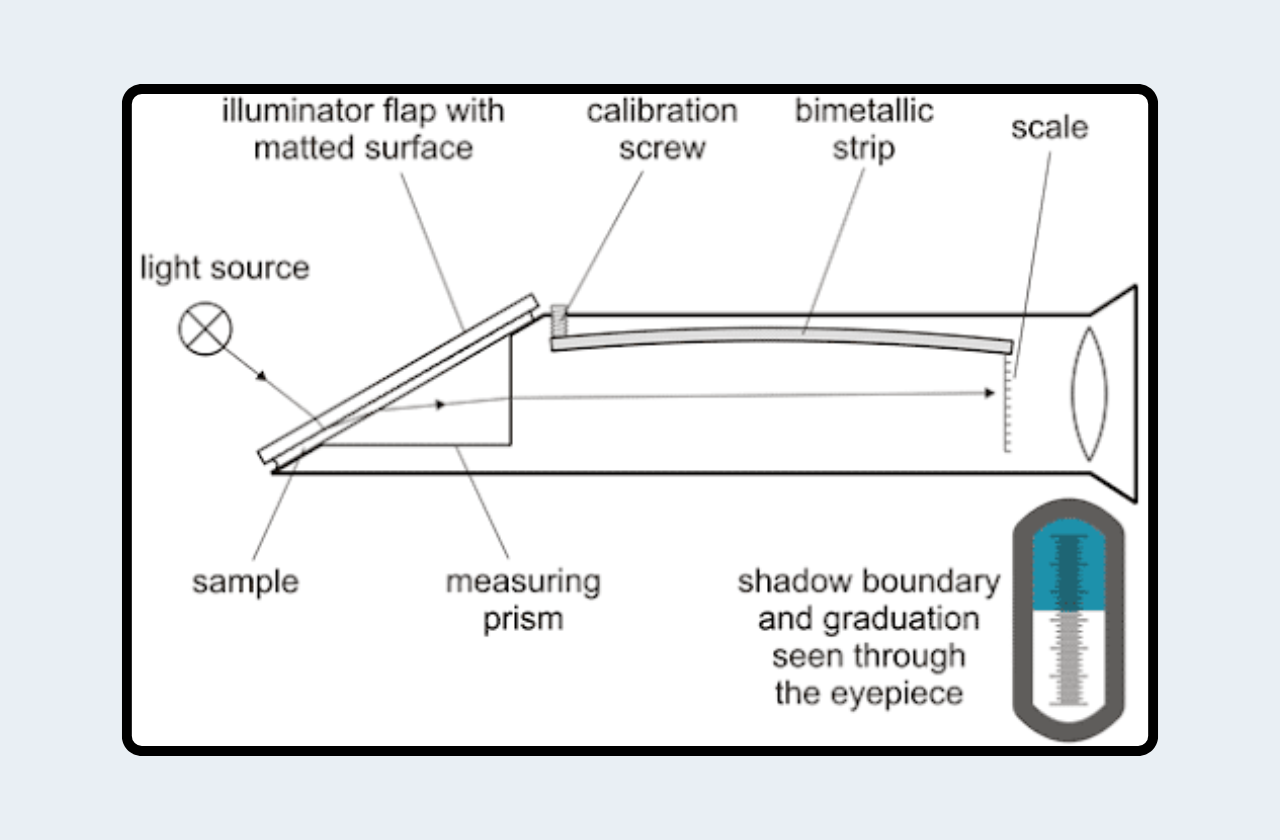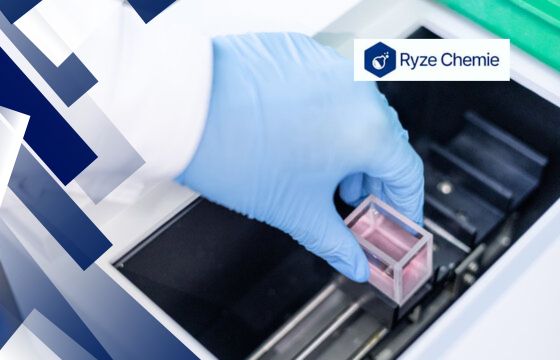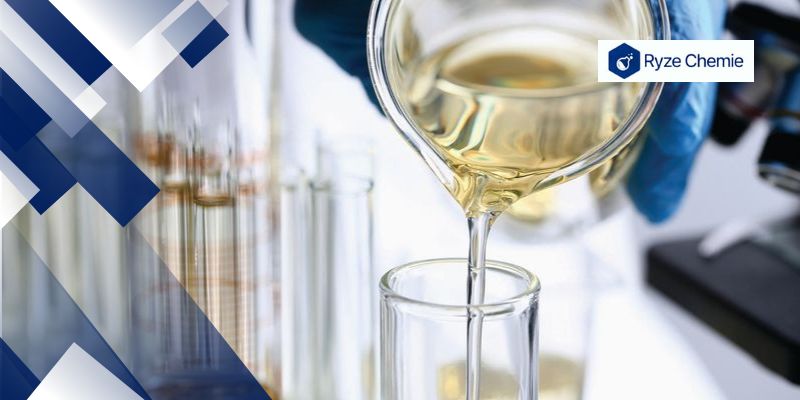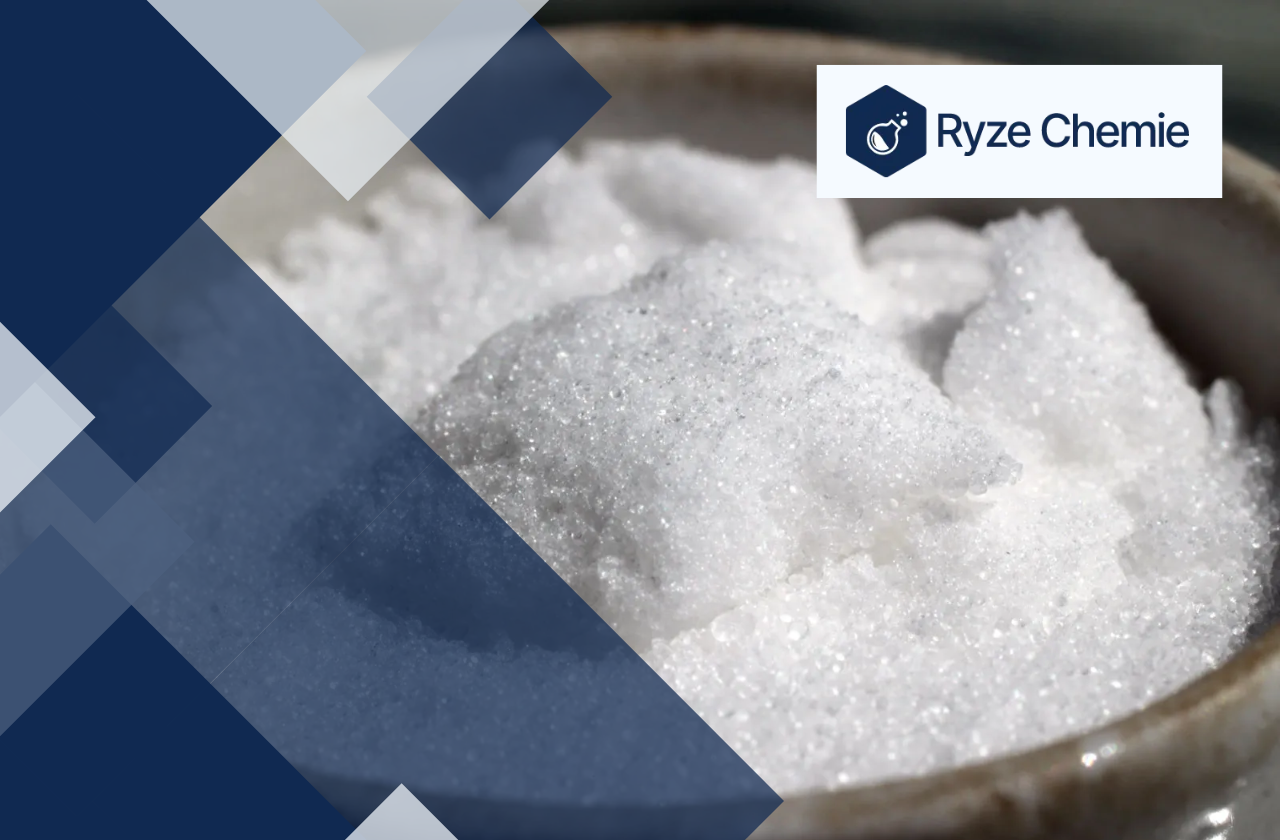
Stay up-to date on the
latest blogs. Join our
newsletter today!
This site is protected by reCAPTCHA and the Google Privacy Policy and Terms of Service apply.
How Does A Refractometer Work: A Guide (2024)

Written by Team Ryze Chemie
10 mins read · Jun 21, 2024

Determining the concentration of a solution is a common task in many laboratories. Traditional methods can be time-consuming and require specialized skills. If you need a faster, more user-friendly solution, you've come to the right place.
This comprehensive guide explains how refractometers work. It simplifies the science behind refraction and provides step-by-step instructions on how to use different types of refractometers. After reading this guide, you will be equipped to confidently use this valuable tool in your work.
What is a Refractometer?
A refractometer is an essential laboratory instrument designed to measure how light bends (refracts) when it passes through a substance. This bending of light, known as refraction, is a fundamental property of all materials and is directly related to the substance's composition and concentration. Refractometers have become indispensable tools in various fields, from chemistry and pharmaceuticals to food and beverage production.
Now that we know what a refractometer does, let's explore why this information is so valuable in the lab.
The Importance of Refractometry in the Lab
Refractometry helps us check purity, concentration, and other properties of substances. This is crucial for many experiments and tests. Refractometers play a pivotal role in laboratories for a variety of reasons:
- Quality Control: Refractometers ensure the consistency and quality of products by measuring the concentration of ingredients, such as sugar in beverages or solids in solutions.
- Chemical Purity Analysis: By comparing a sample's refractive index to known standards, researchers can determine the purity of chemicals and detect the presence of impurities.
- Concentration Determination: Refractometers are used to measure the concentration of solutions, making them valuable in fields like pharmaceuticals and food processing.
- Research and Development: In research settings, refractometers are employed to study molecular interactions, monitor chemical reactions, and analyze the properties of new materials.
Lab work depends on accurate information. Now we will look at the different tools that provide this information.
Types of Refractometers Used in Labs
There are several types of refractometers used in laboratories, each with its own advantages and applications:
- Abbe Refractometers: These versatile instruments are used in a wide range of industries and are known for their ability to measure the refractive index of both liquids and solids.
- Digital Refractometers: These modern refractometers offer greater accuracy, ease of use, and additional features like automatic temperature compensation.
- Inline Process Refractometers: These are installed directly into industrial processes to continuously monitor the refractive index of fluids, enabling real-time adjustments for optimal product quality.
Knowing the different refractometers helps us choose the right tool for the job. Next, we'll learn the science behind how these tools work.
The Science Behind Refraction
Refraction is the bending of light. Understanding this process helps us understand how refractometers work.
Refractive Index (RI)
The refractive index (RI) is a dimensionless number that describes how much light slows down and bends as it passes from one medium to another. The RI of a vacuum is defined as 1.000. Materials with a higher RI bend light more sharply.
Snell's Law
Snell's Law mathematically describes the relationship between the angle of incidence (the angle at which light enters a substance) and the angle of refraction (the angle at which it continues within the substance). It states:
n1 * sin(θ1) = n2 * sin(θ2)
Where:
- n1 and n2 are the refractive indices of the two media
- θ1 is the angle of incidence
- θ2 is the angle of refraction
Refractometers exploit Snell's Law to determine the RI of a sample by measuring the critical angle – the angle at which light is completely reflected internally within the sample.
Factors Affecting Refractive Index
Several factors influence the refractive index of a substance:
- Temperature: RI decreases slightly as temperature increases.
- Wavelength of Light: Different wavelengths of light have different RIs within the same substance.
- Nature of the Substance: The chemical composition and physical state of a substance are the most significant determinants of its RI.
With a grasp of the basic science, we're ready to see how a refractometer functions step-by-step.
How a Refractometer Works: A Step-by-Step Guide
Refraction is the bending of light. Understanding this process helps us understand how refractometers work.

- Light Source: The refractometer illuminates the sample with a light source, often an LED or a sodium lamp. The specific wavelength used depends on the type of refractometer and the desired measurement.
- Prism(s): The light passes through a prism (or a series of prisms), which creates a boundary between the sample and the instrument.
- Sample Introduction: The sample is placed on the refractometer's prism. Liquids are typically applied as a drop, while solids may require direct contact or special adapters.
- Detection System:
- Analog Refractometers: The user observes the light/dark boundary line through an eyepiece and aligns it with a scale to determine the RI.
- Digital Refractometers: Light sensors detect the critical angle, and an algorithm calculates the RI, displaying it on a digital screen.
- Display and Interpretation: The refractometer displays the results, often in units of refractive index, Brix (a measure of sugar content), or other relevant scales. Lab personnel interpret these results based on the specific application and the nature of the sample.
With a grasp of the basic science, we're ready to see how a refractometer functions step-by-step.
Types of Refractometers
Labs use different types of refractometers. Each type has its own strengths and uses. Let's see what they are.
1) Abbe Refractometer:
- Design: Abbe refractometers are versatile instruments used for measuring the RI of both liquids and solids. They consist of a double prism system, a light source, a telescope, and a scale for reading the results.
- Operation: The sample is placed between the prisms, and the user adjusts the telescope to find the critical angle. The RI is then read directly from the scale.
- Advantages: Abbe refractometers are known for their wide measurement range, accuracy, and ability to handle a variety of samples.
- Disadvantages: They can be sensitive to temperature fluctuations and require careful calibration.
2) Digital Refractometer:
- Features: Digital refractometers utilize light sensors and microprocessors to automatically calculate and display the RI. Many models offer automatic temperature compensation, data logging, and connectivity to external devices.
- Benefits: These instruments are user-friendly, offer high accuracy and precision, and streamline lab workflows.
- Limitations: They may have a narrower measurement range than Abbe refractometers and can be more expensive.
3) Inline Process Refractometers:
- Role: Inline process refractometers are installed directly into industrial processes to continuously monitor the RI of fluids. This allows for real-time quality control and process optimization.
- Applications in Research: In a research setting, inline refractometers can be used to monitor chemical reactions, track changes in solution concentration, or study the behavior of materials under specific conditions.
Specialty Refractometers:
- Handheld Refractometers: Portable and simple to use, handheld refractometers are often employed in field applications, such as measuring sugar content in fruits.
- Gem Refractometers: These specialized instruments are used to identify gemstones by measuring their RI.
- Clinical Refractometers: These are used to measure the protein concentration in bodily fluids like urine or blood serum.
Knowing the different refractometers helps us choose the right tool for the job. Next, we'll learn the science behind how these tools work.
Best Practices for Accurate Refractometry in the Lab
Let's cover the key steps and tips for getting the most accurate readings from your refractometer.
1) Calibration:
- Importance: Regular calibration ensures that the refractometer provides accurate and reliable results.
- Procedure: Calibration typically involves using a standard solution with a known RI (e.g., distilled water). The instrument is adjusted until it displays the correct value for the standard.
2) Sample Preparation:
- Importance: Proper sample preparation is crucial for accurate readings. Contaminants or air bubbles can distort the light path and lead to erroneous results.
- Procedure: Samples should be filtered to remove solid particles and degassed to eliminate air bubbles.
3) Temperature Control:
- Significance: Temperature significantly affects the RI. Most digital refractometers have automatic temperature compensation, but for those that don't, or if high accuracy is needed, manual temperature control or correction factors are essential.
4) Cleaning and Maintenance:
- Importance: Cleanliness is paramount. Residues on the prism or other optical components can interfere with light transmission and affect readings.
- Procedure: The prism should be cleaned with a soft, lint-free cloth and a suitable cleaning solution (often distilled water or a mild solvent). Other components should be cleaned according to the manufacturer's instructions.
Accurate results lead to good lab work. Now, let's explore where we use refractometers in different lab settings.
Applications in Laboratory Settings
Refractometers are versatile tools with a wide range of uses in the lab. Let's look at some examples.
1) Chemical Purity Analysis: Refractometers can be used to determine the purity of solvents, reagents, and other chemicals by comparing their RI to reference values. Any deviation from the expected RI could indicate the presence of impurities.
2) Concentration Determination: In many industries, refractometers are used to measure the concentration of solutions. For example, they are commonly used to determine the sugar content in beverages, the salt content in food products, or the concentration of acids in chemical solutions.
3) Quality Control: Refractometers play a vital role in quality control laboratories. They can be used to ensure the consistency of products, monitor the concentration of ingredients in formulations, and verify the quality of raw materials.
4) Research Applications: Refractometry has a wide range of applications in research laboratories. It can be used to study molecular interactions, monitor chemical reactions in real-time, investigate phase transitions, and analyze the properties of new materials.
Refractometers are helpful tools, but they can sometimes have problems. Let's learn how to fix common issues.
Troubleshooting Common Issues
Even with careful use, refractometers can encounter issues. We'll cover common problems and how to solve them.
1) Inconsistent Readings:
- Possible Causes: Dirty prism, improper calibration, temperature fluctuations, incorrect sample preparation, or instrument malfunction.
- Solutions: Clean the prism, recalibrate the instrument, control the temperature, and re-prepare the sample. If the problem persists, consult the manufacturer's troubleshooting guide or seek professional assistance.
2) Bubbles in Sample:
- Impact: Air bubbles can scatter light and lead to inaccurate readings.
- Prevention: Gently tap the sample to encourage bubbles to rise to the surface. If necessary, use a syringe or pipette to remove the bubbles before taking a measurement.
Conclusion
In conclusion, a refractometer is a valuable tool for any laboratory. It measures how light bends through a liquid sample, providing critical information about its concentration or purity. This simple, easy-to-use instrument is crucial for quality control in various industries, from food and beverage to pharmaceuticals and chemicals.
Remember, accurate calibration and proper cleaning ensure reliable results. With this guide, you now understand the basic principles of refractometry and can confidently use it in your daily work. This knowledge improves your efficiency and accuracy, ultimately contributing to the success of your laboratory operations.
Latest Blogs








